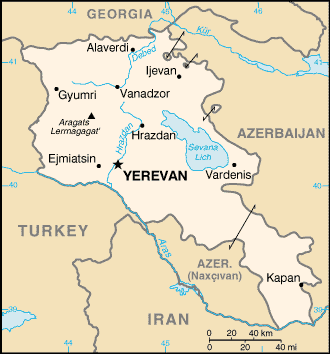Click to enlarge any image..

 June 13, 2010 - To mark the World No Tobacco Day, the Yerevan State Medical University and the American University of Armenia (AUA) convened the first "Tobacco or Health" Conference in Armenia on May 31, 2010.
June 13, 2010 - To mark the World No Tobacco Day, the Yerevan State Medical University and the American University of Armenia (AUA) convened the first "Tobacco or Health" Conference in Armenia on May 31, 2010.
The Conference brought together medical and public health students, faculty, clinicians, public health professionals from Armenia and Diaspora as well as international experts to discuss the mounting evidence on health hazards of smoking and health professional's responsibility in countering the smoking epidemic in Armenia. This event was organized within the framework of the Yerevan State Medical University 90th anniversary celebration.
International Experts: Dr. Frances Stillman, Co-Director of the Johns Hopkins Global Tobacco Control, and Dr. Gregory Connolly, Chair of the Division of Public Health Practice at the Harvard School of Public Health (video address) shared their experience with the conference participants and suggested ways to make smoking history in Armenia.
The conference covered public health and policy aspects of tobacco use, benefits of smoke-free hospitals, emphasized the evidence that tobacco is a major risk factor for many deadly diseases and the need for smoking cessation interventions in Armenia.
Armenia has the highest smoking rates among its European neighbors. Cancer, heart disease, diabetes and other non-communicable diseases account for approximately 83% of all deaths in the country, and tobacco use is the main contributor to these diseases. (URGING ARMENIA TO SAY “NO” TO TOBACCO, Armenia.Usaid.gov, 5/31/2010)According to estimates recently made public Armenian sociologist Aharon Adibekian, people of Armenia annually spend about $200 million on tobacco products.
Armenia ranks sixth for the number of smokers in the world, the World Health Organization (WHO) reports on the basis of the information for 2002-2006. According to the report, about 64% of the adult Armenian population smokes. (Smoking in Armenia, Armeniapedia.org, 1/17/2006)
In January 2005, the President of Armenia signed the first comprehensive National Tobacco Control Law on Tobacco Realization, Consumption, Production and Usage Limitation, which aims to protect the population from the health, social, ecological and other consequences of the perilous impact of tobacco.
Sale of tobacco products to the people under 18 is banned but not enforced at all in Armenia . According to the coordinator of the Armenian National Anti-Tobacco Campaign, there are an increasing number of boys and girls who smoke, and they begin around the ages of 13-15 (Armenian News Network, 2006). Education is essential for preventing the onset of youth smoking and its attendant morbidity and mortality. Young people in Armenia are virtually unaware of the health and other risks of tobacco use. (Tobacco Use and Control in Armenia, Center for Communications, Education, Health and the Environment (CECHE), by Karine Manukyan, PhD., Chairwoman of WGWG (“Women for Green Way for Generations") 2/17/1009.
The Organizing Committee of the first "Tobacco or Health" Conference developed a conference resolution on future strategies of smoking prevention and control by health professionals emphasizing smoke-free hospitals, integration of tobacco control education in the medical curriculum, and endorsement of smoking cessation guidelines.
Reference: AUA hosts conference "Tobacco or Health", The Armenian Reporter, 6/9/2010.
Republic of Armenia has ratified (11 November 2004) the
WHO Framework Convention on Tobacco Control (FCTC) Treaty.



0 comments:
Post a Comment